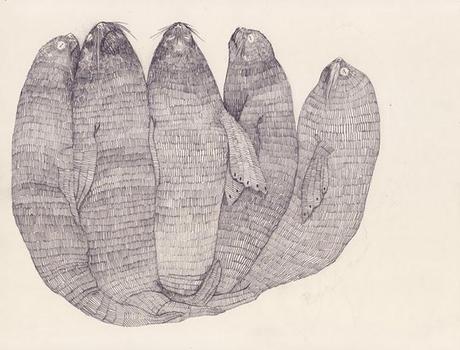
Arsenal 1—2 Man Utd: five in midfield is pure joy
◊
Say this of Arsenal under Wenger: the plot changes every year. From a traditional 4—4—2 to a 4—2—3—1, from the Thierry Henry position to Pires as wide playmaker, from mixed man-marking exercises to strict enforcement of zonal marking principles, as from last year’s attacking high-diamond to this year’s rotating midfield. Currently, the ‘big- game’ plan is to ask the wingers to sit deeper and form, at times, a second bank of four in front of the defense, giving to the team the overall shape of a 4—5—1 formation. In theory, Arsenal’s strategy did not differ much from that of Manchester United: five big animals in the middle, close to one another like the seals in this drawing. In practice, Carrick and Giggs—the latter customarily strolling on the left to amuse (and otherwise unable to achieve greatness or crispness in passing), the former staying more central—had all the time they wanted to kick the ball: a fancy stroke to the wide men, so much casualness to just see what happens.
Like a street clown performing with a turret-cage filled with birds, at the Wingers Royal Opera of United is always high season, even if the theater itself could use a new glow. Conversely, Arsenal’s atrocious full-backs appear a mixture of standoffishness and scaffolding—a tight life, like stirring coffee with cigarettes. Robin Van Persie is at the stage in which Gustav Mahler left for Budapest, at 28, demanding to the heavens, through his Second Symphony, why he struggled, why he suffered after he had started his great embroilment with the Alsatian chief. Would Mr. Van Persie meet Real Madrid’s representatives in London, at his earliest convenience?

